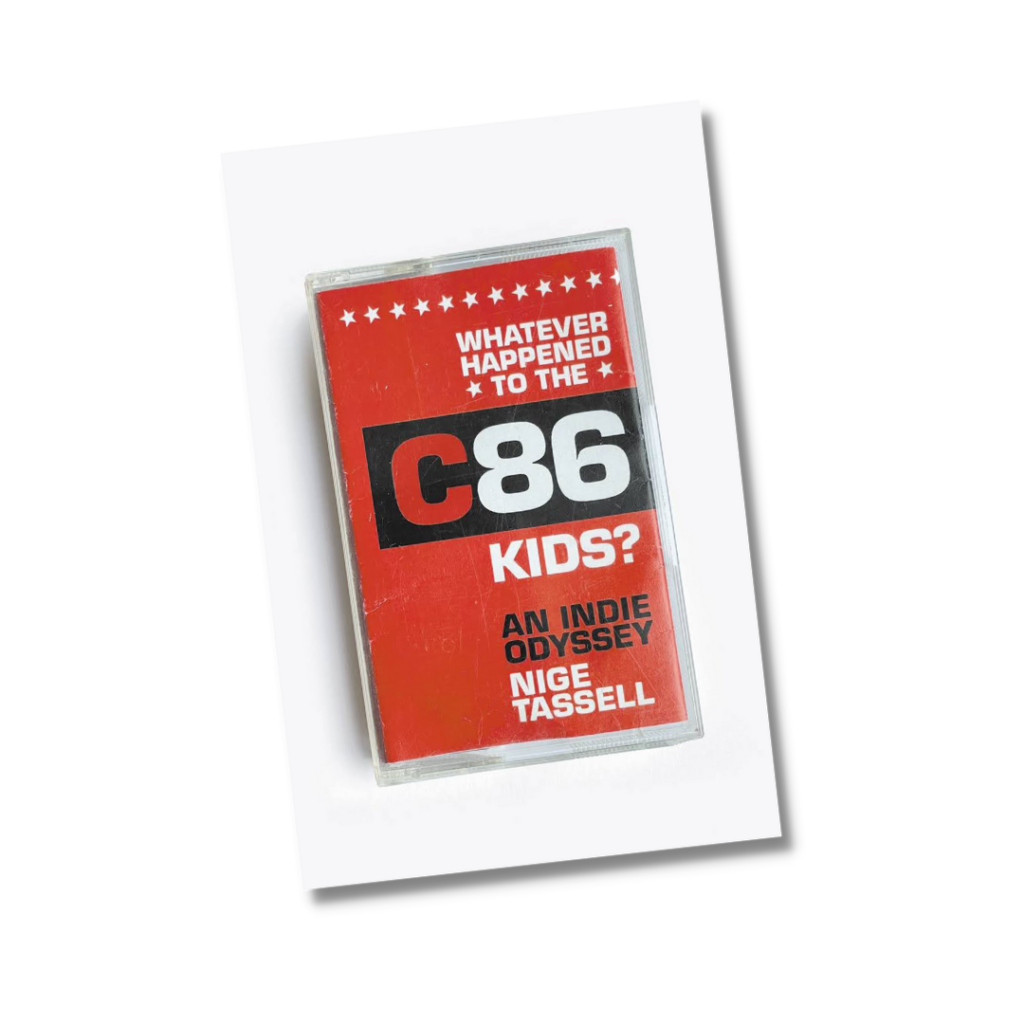Some 36 years ago, the NME released a cassette tape that comprised of 22 new guitar-based bands licensed from British independent record labels of the time, which even featured the then unknown Scottish rock band, Primal Scream. C86 was arguably the birth of ‘indie music’, but what happened to those musical dreamers? asked renowned journalist and local author Nige Tassell. In his new book, Whatever Happened to the C86 kids? An Indie Odyssey, he tracks down the members to find out exactly where life led them…
Bogshed, Stump and Miaow; The Mighty Lemon Drops, Half Man Half Biscuit and Close Lobsters; The Wedding Present, The Soup Dragons and Primal Scream: we’ve pressed rewind on the musical memory box, hitting the stop button when it reaches 1986.
Back then, the New Musical Express (best known as the NME) was a best-selling British ‘rock inkie’, selling 300,000 copies a week at the peak of its circulation to young people for whom 50p was a very small price to pay for a ticket to ride the exciting, rebellious, subversive and occasionally glamorous waves of cultural revolution away from the sanitised, highly commercial UK Official Top 40 Chart.
In May of 1986, readers who cared to invest a little more spare cash surfing those waves were offered this: “NME is making a declaration of independents on our latest mail-order cassette: 22 tracks across two sides, all lined up and raring to go in exchange for a postal order for just £2.95”.
Today, Nige Tassell has been a journalist for more than twenty years. Having undergone a stint as editor for the now-legendary Bristol and Bath weekly listings magazine Venue, he’s written extensively about sport, music and popular culture for a range of titles including FourFourTwo, The Guardian, The Word and BBC History.
Whatever Happened to the C86 Kids? An Indie Odyssey is the eighth book in Nige’s prolific career, offering interested parties a fascinating contemporary update on the lives of the members of every single one of the 22 bands listed at the start of this interview, 36 years on.
I found that if I talked to one member of a band, the others would come along; the more I got hold of, the more the list lengthened…people didn’t want to be left out
So, to start at the very beginning (of this book, anyway): how old was Nige when the C86 cassette was released?
“I was 17 – the optimum age for new bands to pitch at,” Nige recalls. “Unusually for music lovers of my generation, I wasn’t a big John Peel fan at the time, mainly because – and this is going to sound really sad of me – I had a daily paper round that started at 5.45am, so I wasn’t listening to Peel at 1am in the morning. But I was a big fan of Janice Long’s Saturday evening show, so I guess my tastes were much more kind of REM rather than Bogshed. The bands on the tape – the popular, more accessible stuff, if you like – was the stuff that chimed with me.”
But why revisit them in 2022?
“I like to alternate my books between popular culture and sport – it keeps my interest levels up!” says Nige. “And I enjoy writing in slightly different styles, for different audiences. When I write about sport, the turnover of the people I’m writing about is much quicker than music – in football, for example, the players come and go really quickly. In C86, I had 22 different bands to write about in just one book, so I could go into depth without being ridiculously forensic. I love travel, and meeting people, and writing about their lives. So, where are the C86 bands now? I’ve gone off and found out – it’s really as straightforward as that.”
Surely, though, tracking down members from all those bands can’t have been straightforward, all this time on? “There was an element of detective work at first, and I really enjoyed that element of quest: lots of online searches, following leads,” says Nige. “One of the first people I made contact with was David Gedge from The Wedding Present and he was up for it straight away because the band is his life, to the present day. When I finally made contact with other names on my list, only a very, very few wanted to keep the door closed; I can count on the fingers of one hand the people who said good luck with it, but I’m not interested. But I found that if I talked to one member of a band, the others would come along; the more I got hold of, the more the list lengthened – some on my doorstep, some much further afield – because people didn’t want to be left out. Some of them are still really good mates, and even do occasional gigs; the floppy fringes may not still be around, but the band members are!”
Inevitably, Nige unearthed a handful of sad stories too as his researched dived deeper, learning of band members who are no longer with us, or who are going through personal tragedies of their own. “Sadly, that’s all part of the story for all of us, isn’t it?” he says. “Then there are the ones who have vaguely stayed in touch, or drifted then come back together again, the way we all do with school friends, or people we used to work with back in the day. And sometimes, we’ve just thought, I don’t need to keep in touch with such-and-such a person, but I wish them well.”
What would have happened, though, if only half of those on the C86 lineup had responded to Nige’s requests? “Rather nerve-wrackingly, perhaps, I knew it had to be all of them or none at all,” he says. “I could perhaps have got away with maybe a couple of them not wanting to to be included because I could have turned their non-compliance into something or, if they were still gigging, gone to one of their gigs and just watched them from afar, for their section. Deep down, I knew I could have gone to all the trouble of setting the whole book out and then not been able to get it across the line. But fortunately, it all turned out fine!”
For Nige, publishing in general seems to have worked out fine, his effortlessly engaging style taking us on a lovely, lively literary journey, distinctly relatable to a ‘certain’ generation. But what will the next generation of live music fans make of Nige’s most recent book – his own children, for example, aged 14 and 17?

“Put it this way: they don’t put up with what I play in the car because they’ve got their headphones in – and I’ve no idea what they’re listening to!” he laughs. “Anyway, they’re both really obsessed by film – they talk about Kurosawa over the dinner table, and discuss soundtracks. But I tend to think, if they see me doing my thing, writing the books that I write at our kitchen table, they’re growing up knowing that they can go their own way and do their own thing too. You’re never going to catch me rolling my eyes and saying, ‘kids today, eh’?
I want them to do their own thing, not mine.” Just like those C86 kids are still doing their own thing, today.
Whatever Happened to the C86 Kids? An Indie Odyssey; Nine Eight Books; hardback £20 (also available on Kindle)



